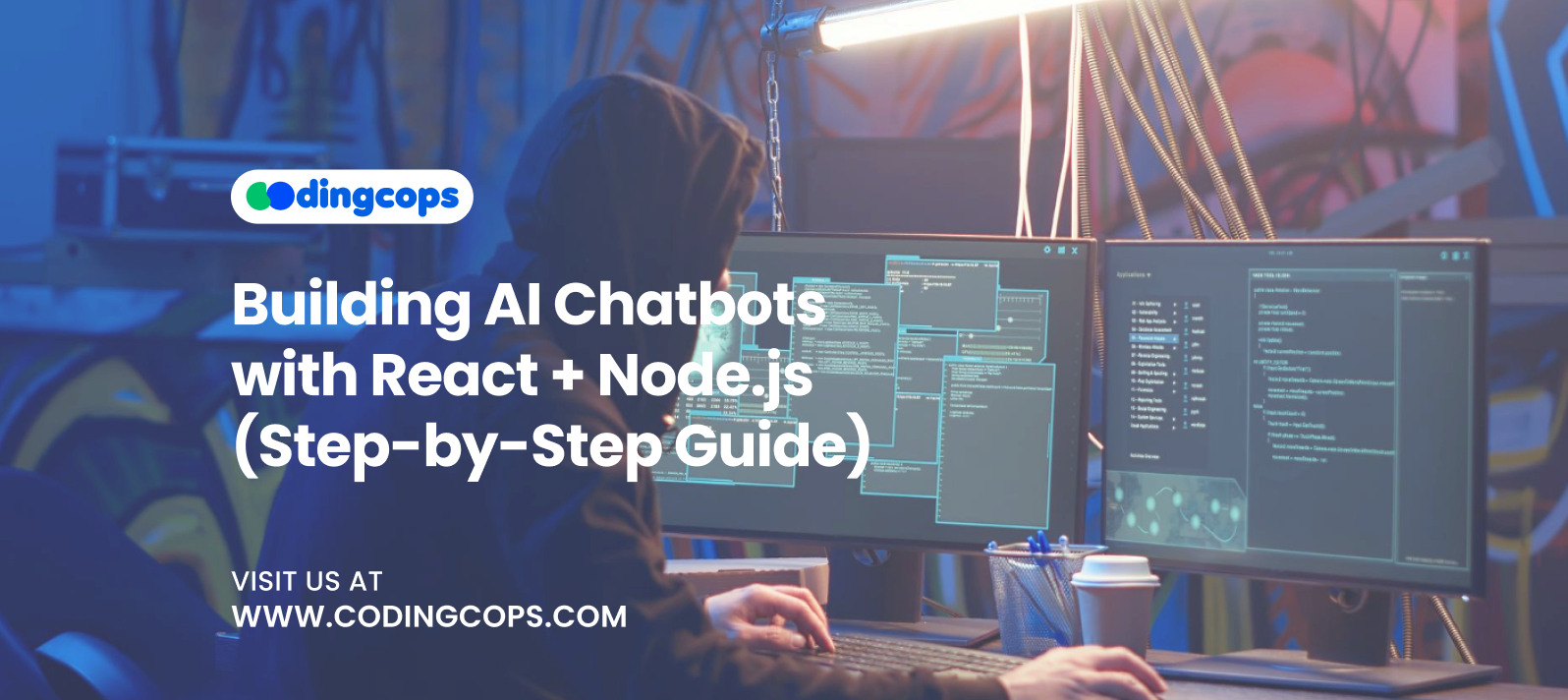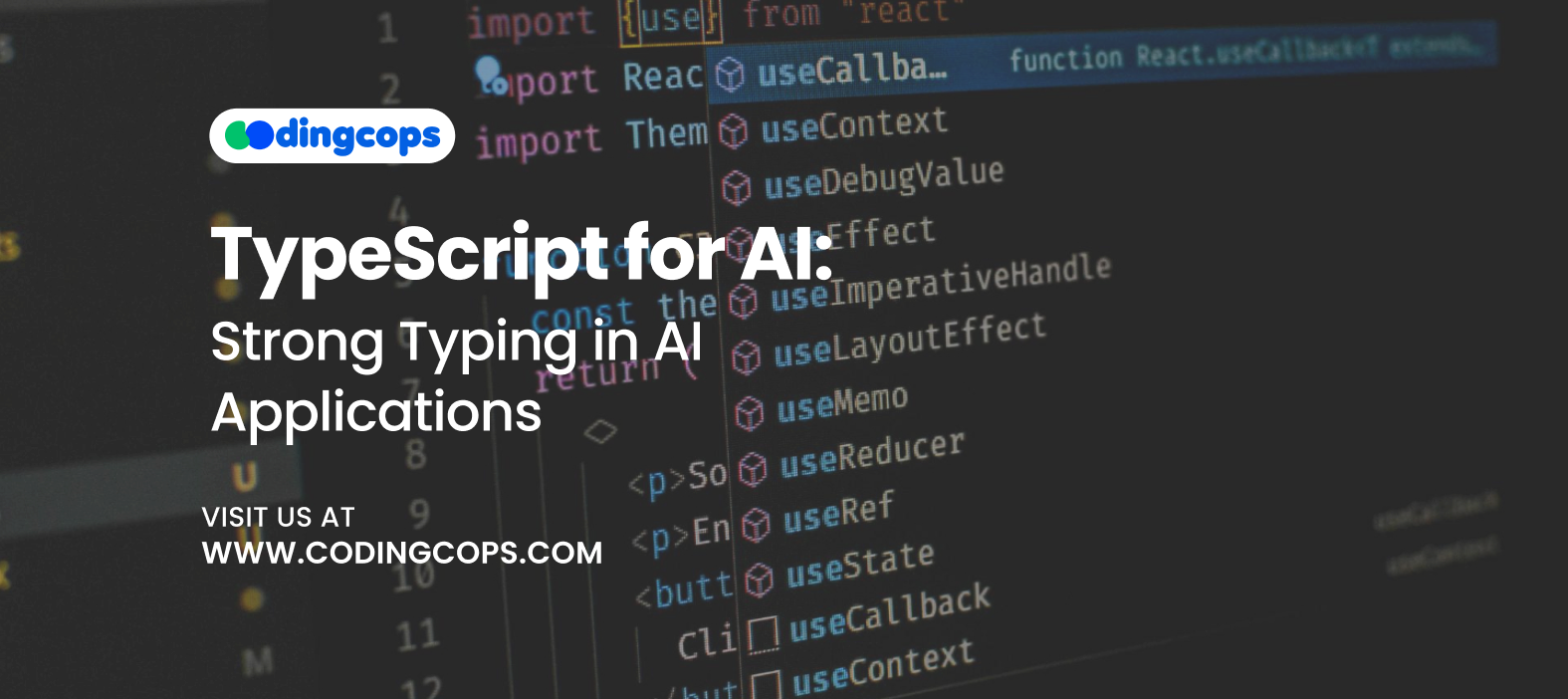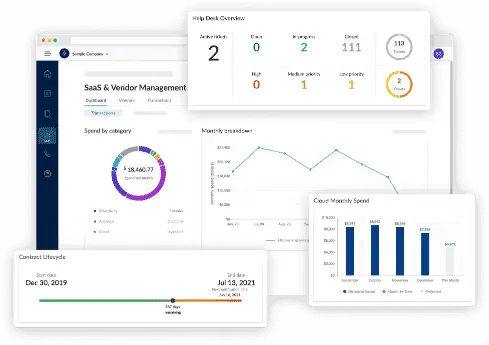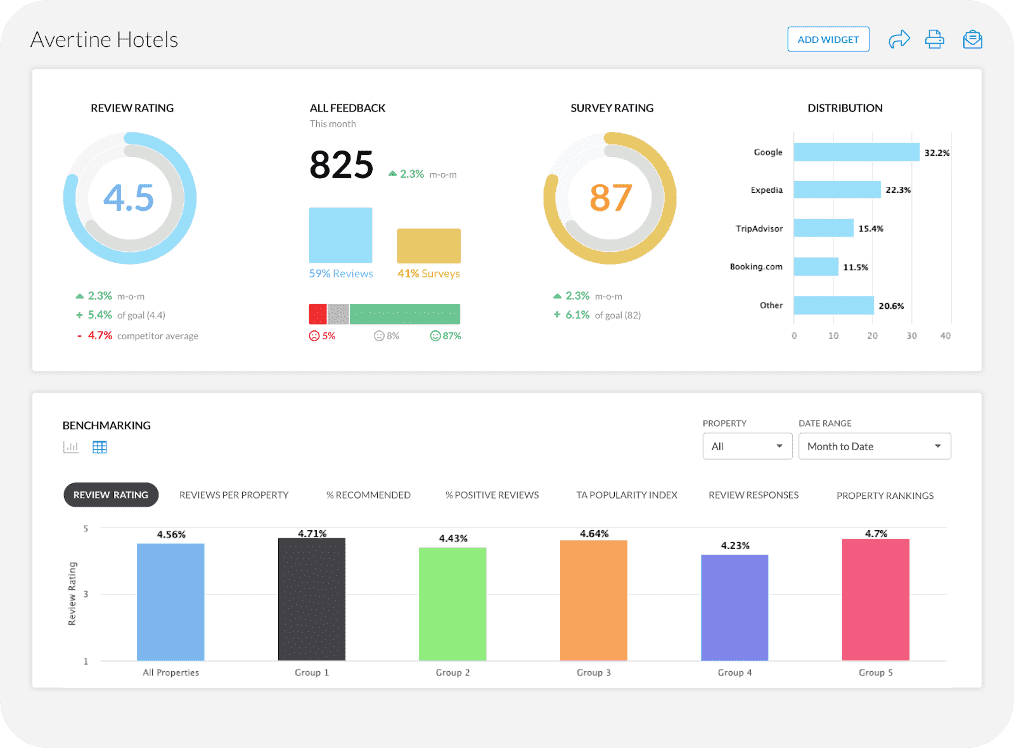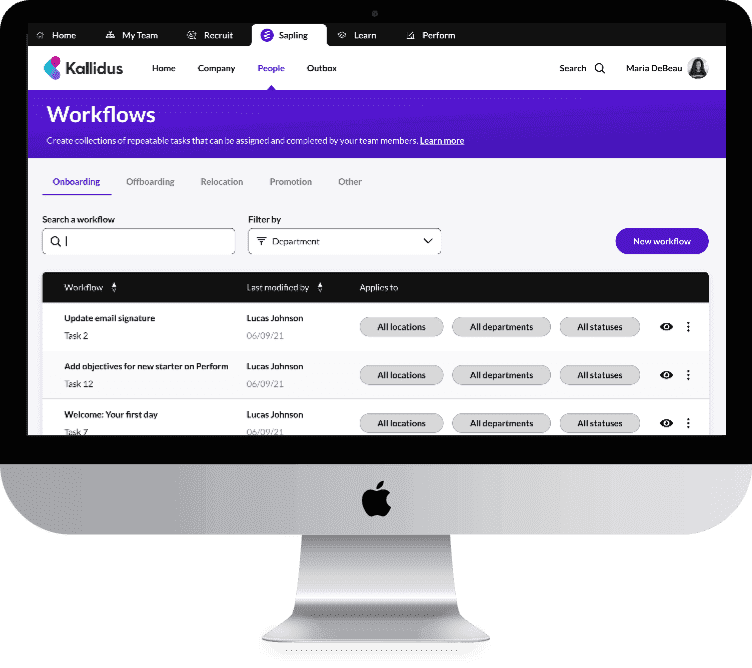According to a survey, 19% of businesses presently use chatbots. This indicates that their usage is growing. Furthermore, 62% of customers prefer chatting with a chatbot rather than waiting for a customer service representative.
AI chatbots are thus the way forward. They enable companies to automate conversations. But creating a chatbot that scales for thousands of users and seems natural is difficult and calls for a robust tech stack. That’s where React and Node can be extremely useful.
From project setup to deployment, we will go over how to create an AI chatbot with React and Node.js in this post.
Why React and Node Are Ideal for Building AI Chatbots?
React
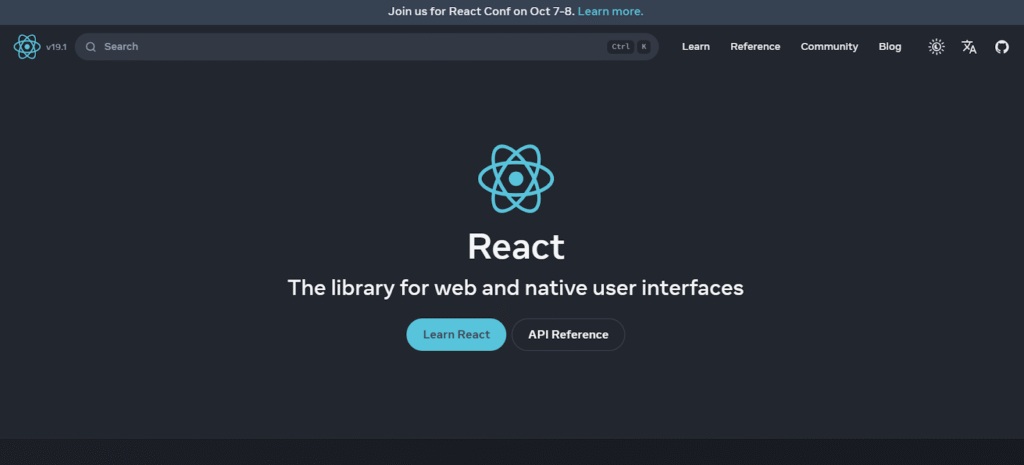
Fast, real time interfaces that allow for the instantaneous appearance of fresh messages are necessary for chatbots. As a result, these changes are swift and smooth without requiring a page reload thanks to React’s virtual DOM. Additionally, this guarantees a seamless conversational flow for consumers.
Another advantage is React’s component base architecture. Chatbots rely heavily on repeating interface elements like chat bubbles. With React, developers may reduce complexity by creating them only once and utilizing them throughout the project.
React also excels in state management, a crucial aspect of chat applications. By using hooks such as useState and useEffect, developers can manage conversation history and handle errors. Moreover, this makes every user interaction more intuitive.
The vast React ecosystem further strengthens its case. With frameworks like TailwindCSS or Material UI for style and modules like Framer Motion for fluid animations, developers may improve chatbot user interfaces. Additionally, mobile apps may use the same chatbot logic thanks to React Native.
Node
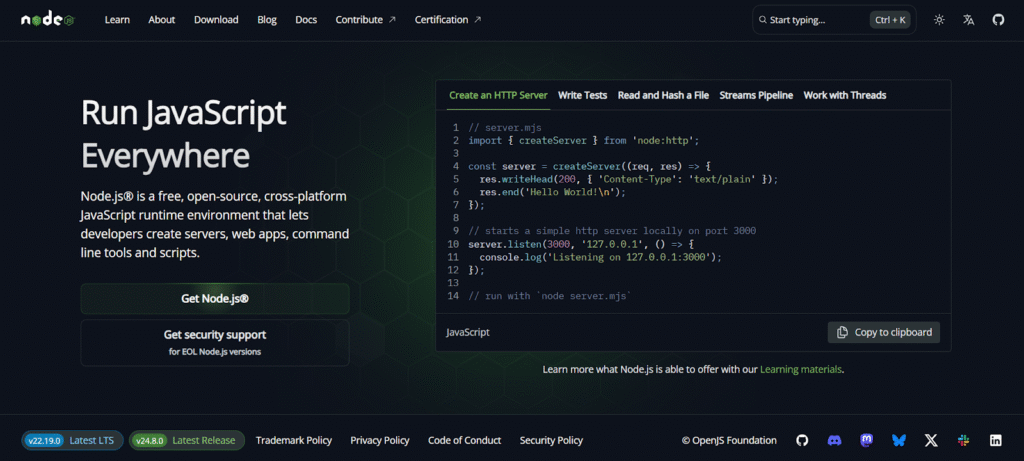
Node drives the chatbot’s backend functionality, while React manages the user interface. Additionally, Node’s event driven nature makes it excellent at handling several requests at once. Chatbots may also manage conversations with thousands of users simultaneously.
Additionally, Node facilitates real time communication using WebSocket frameworks such as Socket. Chatbots may communicate in both directions using WebSockets rather than just REST APIs.
Another benefit is how well Node integrates with AI services. Whether you are connecting to OpenAI or a custom NLP model, Node makes API requests easy to manage and fast to process. It guarantees fast communication between the AI engine and the frontend since it integrates easily with JSON based APIs.
Node’s scalability and performance are additional good advantages. Node applications, which are powered by Google’s V8 engine, are suitable for high traffic scenarios since they are lightweight and fast. Node backends may extend horizontally in response to user demand when paired with deployment platforms like AWS or containerization technologies like Docker.
The uniform language is a benefit that is frequently disregarded. Developers don’t have to move between languages because JavaScript is used to write both the frontend and the backend. This accelerates the entire development process.
How to Build an AI Chatbot with React and Node?
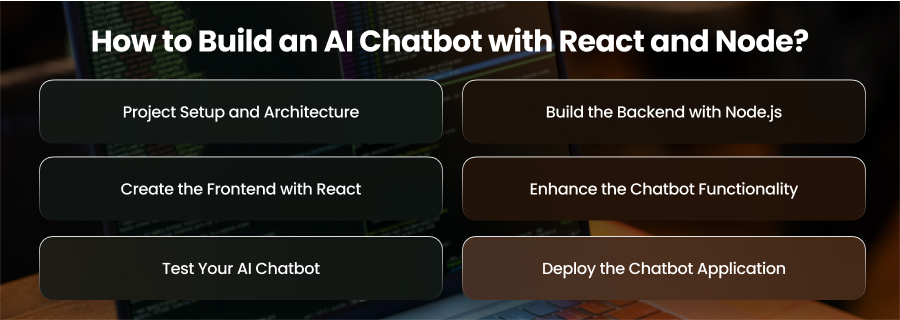
Project Setup and Architecture
Establishing the project environment and selecting a defined architecture are the initial steps. To enable independent management and deployment, it is a good idea to divide the frontend and backend into distinct folders. The frontend will handle user interaction and display the chatbot interface. Furthermore, the backend will manage the chatbot’s logic.
Developers also install the required libraries and tools at this step. This involves creating frontend React apps and utilizing backend scaffolding technologies with Node.js and Express. Maintaining a seamless workflow and keeping the frontend and backend loosely connected yet connected is made easier once the folder structure and tools are established.
Build the Backend with Node.js
The backend acts as the brain of the chatbot. Its primary job is to listen to user queries sent from the frontend, forward those queries to an AI service such as OpenAI, and return the response to the user interface. Node is particularly effective here because of its event driven, which allows it to handle multiple requests at the same time without delays.
Express is frequently used by developers to construct a server and configure routes that manage user communications when building the backend. Instead of being hardcoded into the code, API keys ought to be securely kept in environment variables.
Additionally, because error management is integrated into the backend, the user will get an error notification rather than the chatbot freezing if the AI service fails or the request takes too long. The interface of the chatbot and the AI engine that powers its intelligence are guaranteed to communicate reliably thanks to this layer.
Create the Frontend with React
Since consumers engage with the frontend directly, it must be user friendly and captivating. Typically, React chatbots are constructed using reusable elements like input fields and message bubbles. Additionally, developers may swiftly upgrade functionality and maintain consistency throughout the interface thanks to its component-based design.
Additionally, React’s state management enables the tracking of user inputs and the storing of conversation history. The frontend forwards user messages to the backend and awaits a response. React modifies the discussion state and shows the AI generated message in the chat window once the backend returns it. The goal is to ensure that the interaction feels real time and natural.
Styling the frontend is also important. Developers often rely on frameworks like Material UI to create sleak and responsive designs. The result is a chatbot interface that feels modern and professional, capable of keeping users engaged.
Enhance the Chatbot Functionality
Enhancing the chatbot with features that increase use and engagement comes next, after the basic framework has been built. A typing indication that lets the user know when the bot is producing a response is a typical addition. This gives the chatbot legitimacy and prevents people from believing it is unresponsive. Error handling is another essential element. In the event that something goes wrong, this guarantees that the user will receive informative feedback.
In order to provide the chatbot context from previous conversations, developers may also save conversation history. This enables more intelligent and customized responses, especially during lengthy conversations. The introduction of WebSockets for real-time communication, which provides faster message delivery than traditional HTTP inquiries, is another advancement.
Test Your AI Chatbot
Testing ensures a chatbot performs as intended before going live. Developers frequently test the frontend to ensure that messages show up in the chat window quickly after testing the backend routes to ensure they can send and receive messages appropriately. While manual testing might detect UI problems, Postman and comparable tools are frequently used to assess API endpoints.
Handling cross origin resource sharing problems, controlling API key security, and speeding up response times are typical testing challenges. Developers can make sure the chatbot is dependable and easy to use by taking care of these problems early. A well tested chatbot not only reduces errors but also improves trust with end users.
Deploy the Chatbot Application
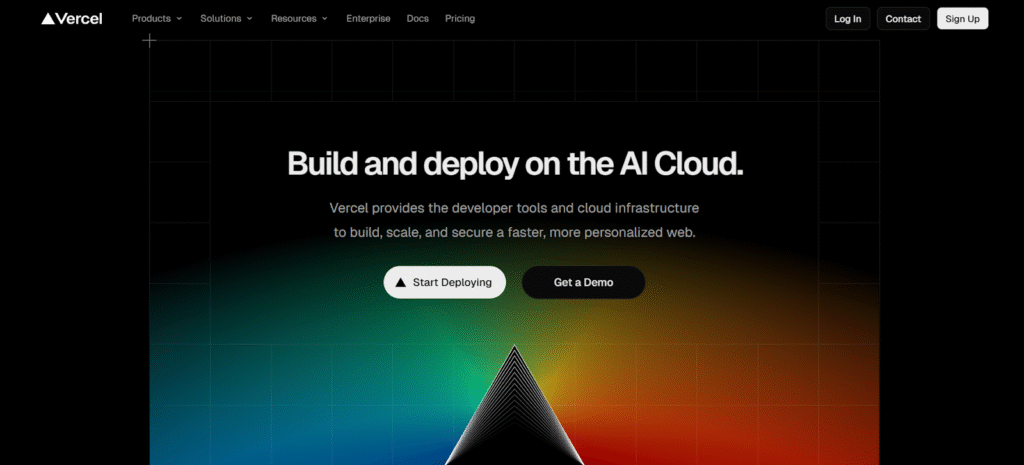
Deployment is the last stage once the chatbot has been constructed and tested. It is possible to deploy the Node built backend on cloud services like Heroku, where environment variables may be safely set up. For dependable delivery, the frontend is frequently hosted on platforms such as Vercel.
In order for the frontend to connect to the right backend URL in production, it is imperative that API endpoints be updated during deployment. To safeguard user data and offer a secure experience, developers must also make sure the application is sent via HTTPS. The chatbot can handle real humans at scale when it is implemented correctly, ready it for customer support.
Best Practices for Building AI Chatbots
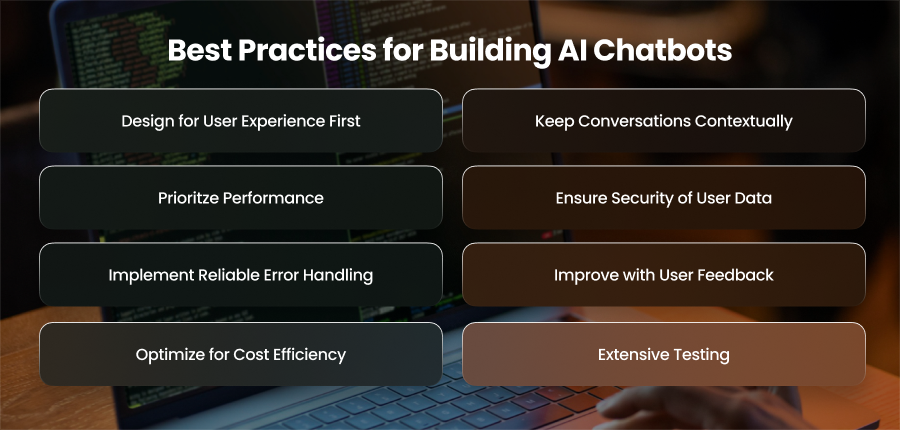
Design for User Experience First
The performance of an AI chatbot is significantly influenced by how customers view it. Before you begin developing code, it is essential to think about the user experience and design an understandable interface. Features like a clean chat pane and a clear bot response improve usability. The conversation flows more naturally with little enhancements like typing indicators or rapid respond buttons.
Keep Conversations Contextually
Users want chatbots to remember their past interactions, even throughout the same session. The chatbot gains intelligence and refrains from giving repetitive or unnecessary answers by maintaining the context of the conversation. Depending on how complex the project is, developers can additionally incorporate session storage on the frontend or maintain discussion history on the backend.
Prioritze Performance
A chatbot that feels slow will frustrate users and reduce engagement. Peformance should be a top priority. On the backend, Node should be optimized for non blocking requests and fast response times, while caching can be implemented to reduce unnecessary API calls. React’s effective front-end rendering guarantees that the user interface refreshes rapidly, but developers should also reduce pointless re-renders to maintain fluid conversation. Equally crucial is scalability, particularly if the chatbot will assist a large number of consumers. Load balancing make sure the system can manage increasing traffic without experiencing any outages.
Ensure Security of User Data
Chatbots commonly handle sensitive data, including private inquiries. Developers must protect the system by encrypting data in transit using HTTPs and restricting access through authentication and permission. Backend services should sanitize inputs to avoid injection attacks. They should follow strict logging requirements to prevent sensitive data from being exposed.
Implement Reliable Error Handling
AI services are powerful but not flawless. Sometimes reponses may fail or the chatbot may not understand a query. Instead of letting the chatbot go silent, developers should reliable error handling. Developers may therefore maintain user engagement even in the event of a problem by accounting for faults.
Improve with User Feedback
At launch, an AI chatbot should never be regarded as a completed product. One of the best resources for development is user input. The chatbot’s intelligence may be raised by developers by gathering interaction logs and examining frequently asked questions. The chatbot will remain useful and relevant over time thanks to frequent upgrades to the frontend interface and backend logic.
Optimize for Cost Efficiency
Many AI chatbots rely on third party API like Dialogflow, which charge based on usage. Without clearful planning, costs can quickly escalate. Developers should implement measures such as batching requests and setting usage limits to manage expenses. Monitoring API usage helps in predicting costs and optimizing the chatbots to run effectively without breaking the budget.
Extensive Testing
You should thoroughly test your chatbot before deploying your chatbot. Unit testing can ensure backend routes function correctly, while integration testing checks how the frontend and backend work together. Simulating real world conversations helps uncover issues that might not appear during development. Also, testing across devices and browsers is also important, as users may access the chatbot from different devices.
Use Cases for AI Chatbots
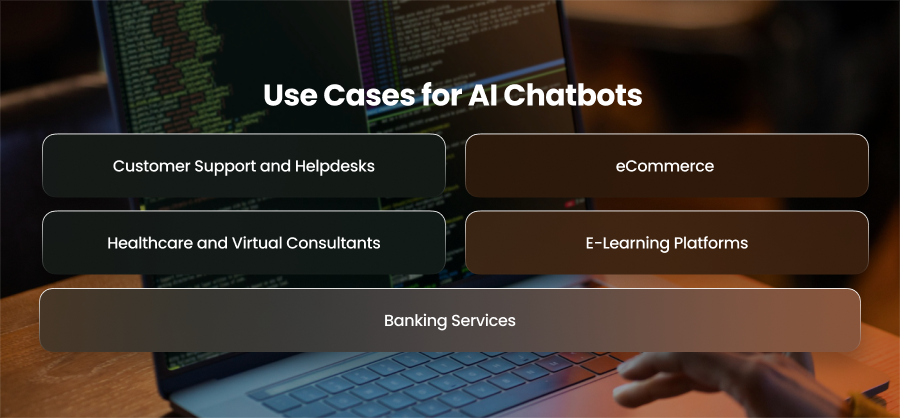
Customer Support and Helpdesks
Customer service is among the most popular applications for AI chatbots. Chatbots may be integrated into websites or applications by businesses to offer support without requiring human workers.
eCommerce
In the eCommerce industry, chatbots are computerized shopping assistants. They might help clients browse product catalogs. For example, a chatbot can provide discounts at the point of sale or suggest related items to a customer while they are examining an article of clothing.
Healthcare and Virtual Consultants
AI chatbots are showing great promise in the medical field. They are capable of doing things like scheduling doctor’s visits and giving out basic health information. Developers must use robust security procedures while working with patient data since privacy is vital in this industry.
E-Learning Platforms
In education platforms, chatbots act as virtual tutors or administrative assistants. They can answer questions or assist with scheduling classes. On education platforms, chatbots can guide new users through the system and recommend learning paths.
Banking Services
Chatbots are used by banks and other financial organizations to offer speedy services like account balance checks and loan application assistance. These bots provide clients with safe, immediate services while lessening the strain of contact centers.
Final Words
AI chatbots built with React and Node offer seamless and intelligent interactions across industries. From customer support to healthcare and education, they drive efficiency and engagement. By following best practices, businesses can create future ready chatbot solutions that deliver value.

